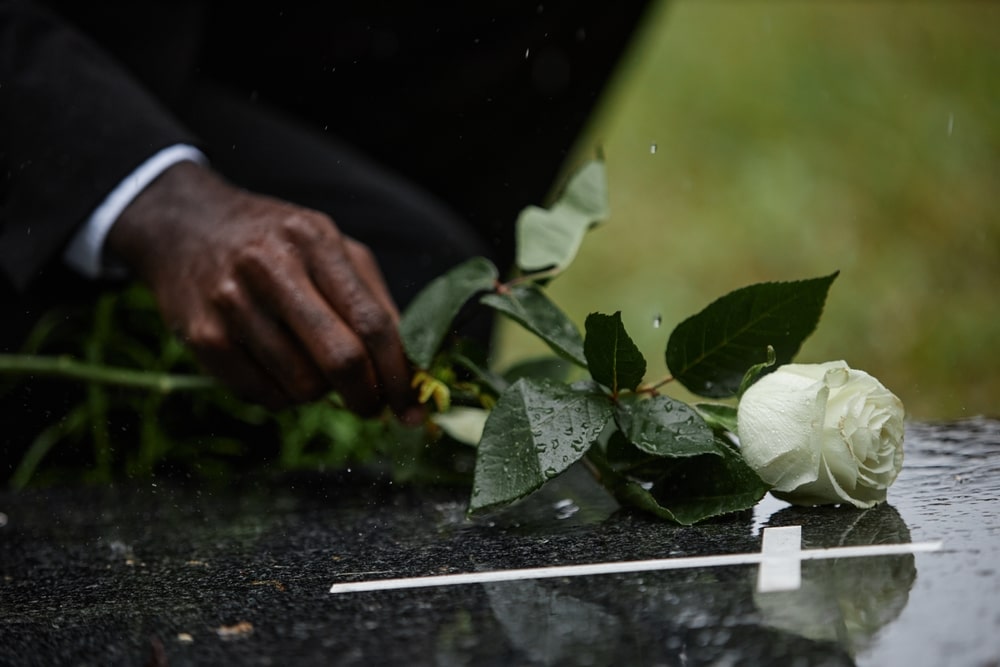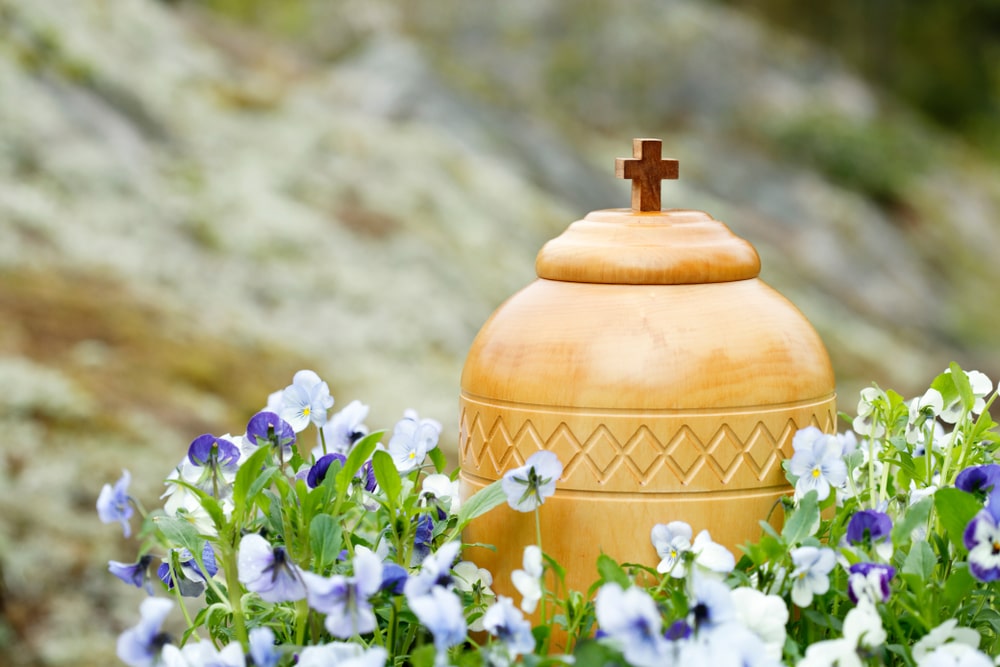
Grief can hit you hard any day of the year, but for many, the holidays are particularly difficult. The beloved traditions may not feel as joyful without the family member or friend who has passed away. While loss is difficult at any age, children experience it differently than adults. Because they are less able to identify their emotions and are still learning positive coping skills, grief can lead to outbursts of big emotions. So, as a caregiver, what can you do this holiday season to support the grieving child in your life?
1. Create Space for Their Emotions
Often, emotions are a bit paradoxical. You can feel joy and grief within moments of each other, which adults have learned how to manage. But for children, the tug between happiness and sadness may feel more extreme. To help them balance, create space for their emotions throughout the holidays.
Validate their feelings by listening and offering encouragement and comfort. Discuss how it’s okay to feel both happy and sad after losing someone. When a child is feeling out of sorts, invite them to draw a picture of a favorite memory or write down what they miss about the person. You could also encourage other healing actions, like taking flowers to the graveside, attending a remembrance service, or hanging a memorial ornament on the Christmas tree.
2. Encourage Open Dialogue and Connection
Children are still learning the social norms, so it’s not unusual for them to ask direct questions. Encourage this openness of communication. Read age-appropriate, grief-related books that will spark conversation. Ask open-ended questions like “What’s something you miss about [loved one’s name]?” Or sit down and play together while sharing memories.
If your child wants to talk about the death, talk about it. Children need to realize that death isn’t a taboo subject; it’s actually healthy to talk about what has happened because it helps them process difficult emotions. And don’t be afraid to show your own emotions during these conversations. By expressing your own sadness, you teach your child how to do the same.
3. Embrace Moments of Joy
Amidst the sadness, there are going to be times of joy during the holiday season. Take time to embrace those moments with your child. While grief is hard, it should not eclipse everything to the extent that there is no room for joy. And if you see that your child is having a hard time balancing their emotions and is slipping more into melancholy, create opportunities for joy.
You could watch a favorite holiday movie together or roast s’mores outside as the snow falls. Go shopping for presents together, decorate your home, or plan Christmas crafts that everyone will enjoy. Marvel over the neighborhood Christmas light displays or go ice skating at the local pond. And when grief inevitably hits, take time to acknowledge and feel it. Then, keep moving forward.
4. Take Time to Remember
One of the best tools you can utilize on the grief journey is the gift of memory. Though it may sound strange, looking back is the way forward. Respected grief counselor Dr. Alan Wolfelt puts it this way, “In my experience, remembering the past is the very thing that eventually makes hoping for the future possible. Mourners’ lives will open to renewed hope, love and joy only to the extent that they first embrace the past.”
So, take time to remember this holiday season. Make a memory wreath or keepsake craft with your child. Bake the loved one’s favorite holiday treat or choose a special memorial ornament. Hang up the loved one’s stocking and fill it with notecards that share memories, prayers, or thoughts. Set an extra place at the dinner table or light a memorial candle in the window. There are so many things you can do to encourage remembrance and invite a loved one’s memory into your holiday season.
5. Maintain Routines with Added Flexibility
Kids thrive on routine, and familiarity can offer comfort and stability to a grieving child. While the holidays are often full of activities that aren’t the norm, you can adjust the family schedule if you or the kids are beginning to feel overwhelmed. As is appropriate, allow your child to decide which events they’d like to participate in, especially on days when they are experiencing particularly high emotions.
When you can, stick to bedtimes, chores, and other basic routines or expectations to keep a sense of stability and predictability in your family’s day. There will be moments when the routine is disrupted, and that’s okay. Just make sure that your child understands what to expect for the day, so they can prepare themselves for anything new or different.
6. Allow This Year to Be Different
As a caregiver, you may be tempted to make sure that absolutely nothing changes for your child’s holiday season following the loss of a loved one. While the idea comes from a good place, you don’t have to put that much pressure on yourself. It’s okay to allow this year to be different. Different isn’t bad; in many ways, it can be just what you need.
So, give yourself permission to talk with your child about skipping or modifying the regular traditions. Or start something new that requires less effort, like taking a memory walk or writing a holiday letter to your lost loved one. And for the activities you do participate in, let your child know it’s okay to take breaks when their emotions are running high.
7. Understand Developmental Perspectives
Children process grief differently based on their age, maturity, and understanding of death. Some kids may fluctuate between feelings of joy and happiness and feelings of sadness, frustration, and anger. As a caregiver, it’s important that you identify where your child is at developmentally, so you can meet them there and respond in an age-appropriate way.
Here are a few quick tips:
- With young children, use simple, clear language and focus on reassuring them that they are loved and safe.
- For school-age children, provide added space for questions and discussion.
- With teens, be open and available for deeper conversations while also respecting their desire for privacy or independence.
For helpful information on developmental stages, check out this helpful resource from the Dougy Center, a national grief center for children and families.
8. Take Care of Yourself as Caregiver
In order to support a grieving child, you need to also take care of yourself. If too many holiday activities are causing you to be stressed and irritable, look at your calendar and decide what can go. If you’d prefer, choose low-key activities that won’t require as much mental or physical energy. And of course, make sure you are getting enough sleep and eating regular meals.
Also, pay attention to your own emotional state. Most likely, you are grieving too, and it can be tempting to set aside your own needs. However, as much as possible, take time to process your own feelings. You could journal, talk with friends, exercise, or get creative to express your grief. By addressing your own feelings, you ensure that you are more emotionally stable when dealing with your child’s grief.
9. Get Help from Your Support Network
Because the holidays are often busy, you may feel pulled in several directions. By asking your support network for help, you give yourself a little breathing room. And when there’s breathing room, there’s more space to actively engage with your child and pay attention to their needs.
In our culture that focuses on independence, it can be hard to ask for help. But oftentimes, people are just waiting for you to tell them how they can help. Call up your best friend or sibling to help bake cookies or take the kids to a movie. Ask a trusted neighbor if the kids can play at their house while you run a few errands. Schedule a babysitter so you can have a little time for yourself during the holiday hustle and bustle. You don’t have to do this alone because people want to help.
10. Look for Signs of Troubled Grief
And lastly, you can support a grieving child by looking for signs of troubled grief. Most children adjust to a loss and move forward, but sometimes, they may need an extra level of support. If your child is exhibiting the following behaviors, consider getting additional help.
- Intense feelings of sadness, tiredness, or social withdrawal
- Major changes in sleeping or eating habits that have a significant impact on daily life
- Inability to talk about the death or appearing to be disconnected from reality
- Expressing the desire to hurt themselves
- Extreme separation distress or inability to separate from caregivers
- Excessive preoccupation with the circumstances of the death
- Reckless or risky behaviors, like using drugs, drunk driving, or stealing
Every child grieves differently, and there is no set timeline for grief. However, if any of these behaviors are present six months after the loss of a loved one and are impacting daily routines, consider having your child assessed by a mental health professional who is well-versed in the treatment of childhood grief.
Hopefully, these 10 suggestions will help you create a loving and memorable holiday season for your grieving child. Grief is a journey, not a task to complete. With your steady presence and loving support, your child can honor their loved one’s memory while discovering hope and meaning in the holidays—and beyond.







































































